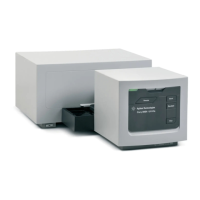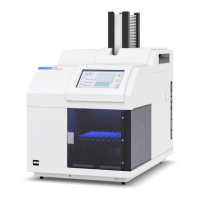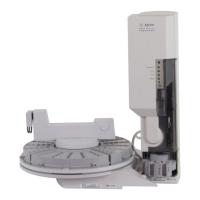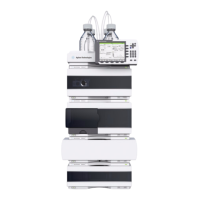Understanding Your Agilent ChemStation 245
Evaluating System Suitability
11
Performance Test Definitions
Statistical Moments, Skew and Excess
Statistical moments are calculated as an alternative to describe asymmetric
peak shapes. There is a infinite number of peak moments, but only the first
five are used in connection with chromatographic peaks. These are called 0
th
Moment, 1
st
Moment, … 4
th
Moment.
The 0
th
Moment represents the peak area.
The 1
st
Moment is the mean retention time, or retention time measured at the
center of gravity of the peak. It is different from the chromatographic
retention time measured at peak maximum unless the peak is symmetrical.
The 2
nd
Moment is the peak variance which is a measure of lateral spreading.
It is the sum of the variance contributed by different parts of the instrument
system.
The 3
rd
Moment describes the vertical symmetry or skew. It is a measure of the
departure of the peak shape from the Gaussian standard. The skew given
additionally in the Performance & Extended report is its dimensionless form.
A symmetrically peak has a skew of zero. Tailing peaks have positive skew and
their 1. Moment is greater than the retention time. Fronting peaks have
negative skew and their 1. Moment is less than the retention time.
The 4
th
Moment or excess is a measure of the compression or stretching of the
peak along a vertical axis, and how this compares to a Gaussian standard for
which the 4. Moment is zero. It can be visualized by moving in or pulling apart
the sides of a Gaussian peak while maintaining constant area. If the peak is
compressed or squashed down in comparison, its excess is negative. If it is
taller, its excess is positive. Also the excess is given in the Performance &
Extended report in its dimensionless form.

